History of the Sega Dreamcast
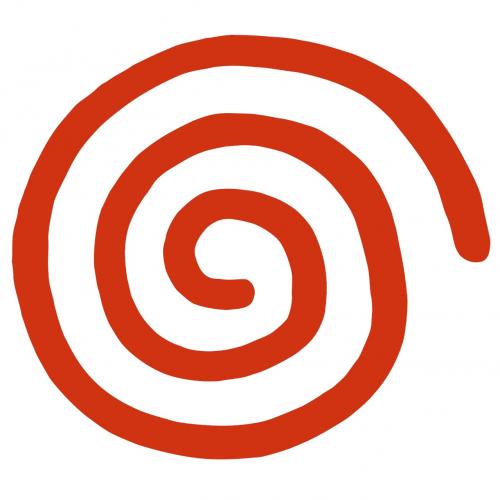
In the early 1990's Sega was one of the largest software company and definitely at it's peak. Sega was dominating the arcade market with cutting edge titles like Virtua Fighter and Daytona USA, and releasing on home computers and consoles well established titles including Outrunners and Golden Axe: The Revenge of Death Adder. Although home console success had still been elusive in Japan, elsewhere in the world the Sega Mega Drive (Genesis in the US) had become a hit, thanks to legendary franchises as Sonic The Hedgehog, Ghouls'n Ghosts, Streets of Rage, Phantasy Star and the EA Sports lineup, which helped to create an entire generation of sports gamers.
In 1994 , as a measure to contrast Nintendo until the next generation Sega hardware was ready for release, the Sega of America and Japan jointly developed the SEGA 32X, an add-on for the SEGA Mega Drive. The SEGA 32X allowed gamers to play 32-bit games on their 16-bit consoles.
The add-on was distributed under the name Super 32X in Japan, Genesis 32X in North America, Mega Drive 32X in the PAL region, and Mega 32X in Brazil.
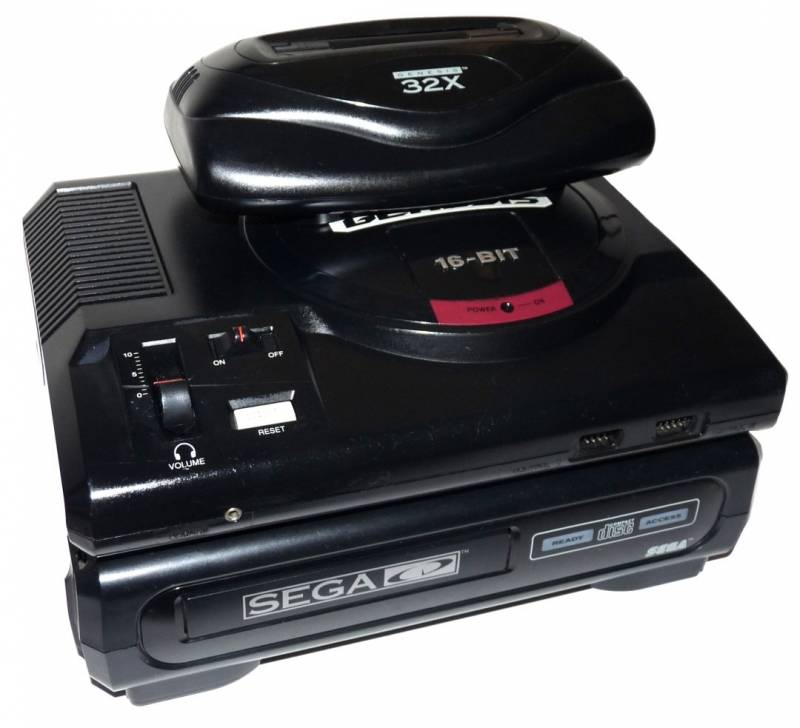
The 32X damaged the Sega's reputation. Only a small lineup of titles was released and the system was discontinued just 18 months after launch. Released in North America during the 1994 Christmas season , despite the initial great start, it created consumer uncertainty, as it was released in the US at the same time that the real 32-bit system, the Sega Saturn, launched in Japan.
A total of 40 titles were produced worldwide [ 36 North America (10 Exclusives ), 27 PAL (2 Exclusives ), 18 Japan (1 exclusive ), and 1 game exclusive to Brazil ], including six that required both the 32X and Sega CD add-ons.
List of SEGA 32X games released by Sega
- After Burner
- Cosmic Carnage (JAP: Cyber Brawl)
- Darxide
- Doom
- Fahrenheit Studios
- Golf Magazine: 36 Great Holes Starring Fred Couples
- Knuckles' Chaotix
- Kolibri
- Metal Head
- Motocross Championship
- Night Trap
- Shadow Squadron (JAP and PAL: Stellar Assault)
- Slam City with Scottie Pippen
- Space Harrier
- Spider-Man: Web of Fire
- Star Wars Arcade
- Supreme Warrior
- Tempo
- Virtua Fighter
- Virtua Racing Deluxe
- World Series Baseball Starring Deion Sanders
- Zaxxon's Motherbase 2000 (PAL: Motherbase/ JAP: Parasquad)
List of SEGA 32X games released by Third Party
- BC Racers
- Blackthorne
- Brutal: Above the Claw
- Corpse Killer
- FIFA Soccer 96
- Mortal Kombat II
- NBA Jam Tournament Edition
- NFL Quarterback Club
- Pitfall: The Mayan Adventure
- Primal Rage
- R.B.I. Baseball '95
- Sangokushi IV
- Star Trek: Starfleet Academy Starship Bridge Simulator
- Surgical Strike
- T-MEK
- Toughman Contest
- WWF Raw
- WWF WrestleMania: The Arcade Game
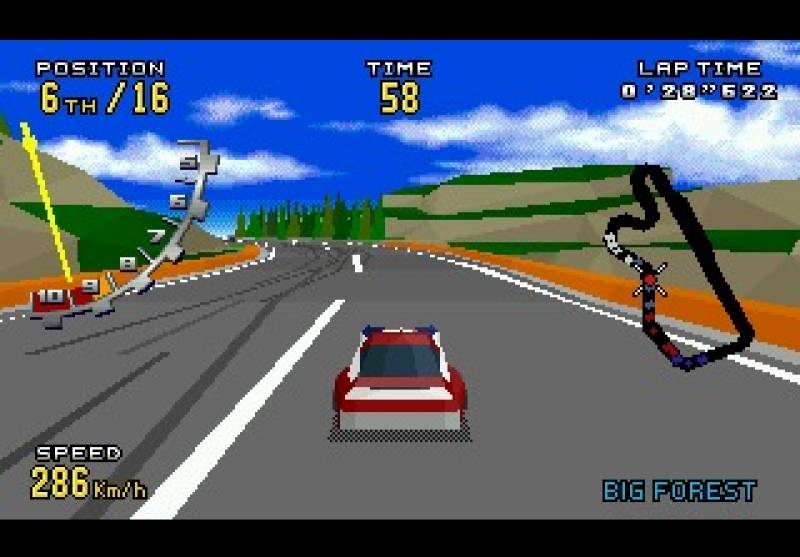
Sega Saturn
Development of the Saturn began in Japan in 1992 , and the system was first shown to the public at the Tokyo Toy Show in the summer of 1994 . Designed initially with sprite-based graphics in mind, the Saturns system specs were altered late in the development cycle in response to the upcoming Sony Playstation’s polygon-centric design. The final system had a far more complicated hardware architecture the the initial one.
The Saturn hit first the Japanese stores in November 1994 , along with a port of the arcade hit game Virtua Fighter , a game that on the launch day sold nearly as well as the Saturn itself.
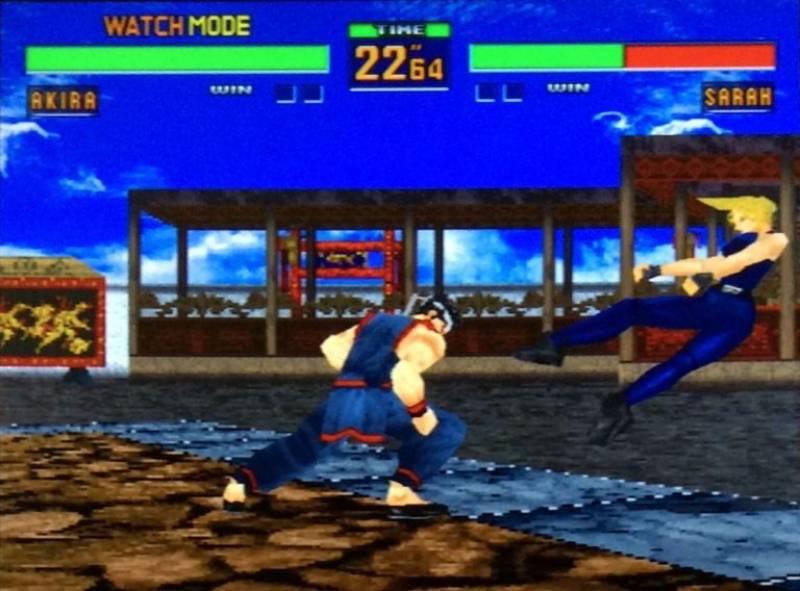
Virtua Fighter was scheduled to be released in North America in September 1995 , but at the Electronic Entertainment Expo in May 1995 , in order to obstruct the forthcoming Sony Playstation to market, Sega of America president Tom Kalinske shocked everyone by announcing that the system had already been shipped to select retailers.
Consumers, who may have felt wary about supporting Sega after the under-supported Sega CD and 32X, largely neglect the system, also due to the initial 400 dollars price tag. Sega also succeed to damaged relations with retailers, who had been shocked by the console surprise early launch. Sony would ultimately sign exclusivity deals with both retailers Kay-Bee Toys and Circuit City, making the Playstation the only 32-bit console sold at 1.500 retail locations nationwide.
Slowly, over the time the Playstation sales continued to eclipse those of the Saturn, and Sony began signing exclusivity agreements with developers who had been putting games out for Sega including Eidos, whose perhaps most-famous title Tomb Raider , had for a time been the best-selling game on the Saturn.
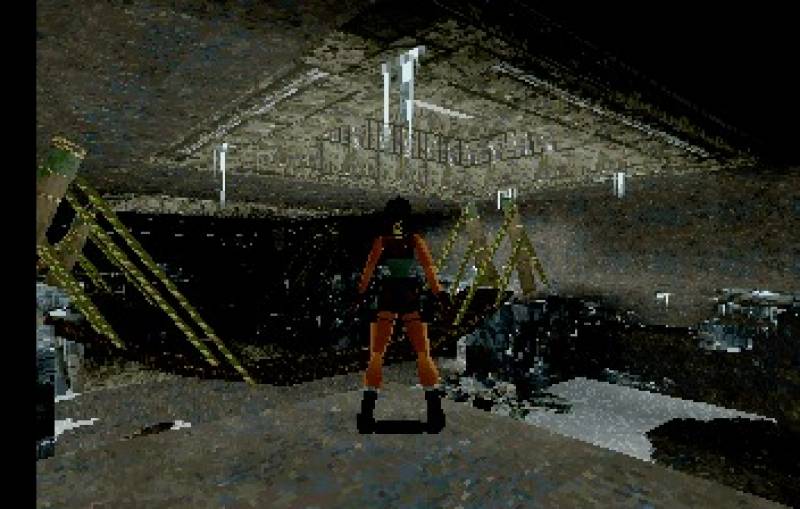
But despite Sega was struggling to stay afloat in North America, the Saturn was actually selling well in Japan. In fact, the Saturn was the most popular console Sega had released in Japan, selling a total of 6 million units over the course of its lifetime. Sega was finally experiencing success in their home country and was blaming Sega of America for a lack of success in US. This ultimately cost the Sega of America its most valuable asset. Tom Kalinske , at that time president and CEO of Sega of America Inc. resigned from the company in the summer of 1996 .
At that time Sega believed that their first-party titles were the real killer app of the Saturn’s library, and was not interested in properly support third-party titles. Although the Saturn had for a time been able to maintain a marginal lead over the Playstation in Japan, it was the 1997 release of Square’s Playstation-exclusive Final Fantasy VII that finally pushed Sony’s console into the lead and foreshadowed the Saturn’s demise.
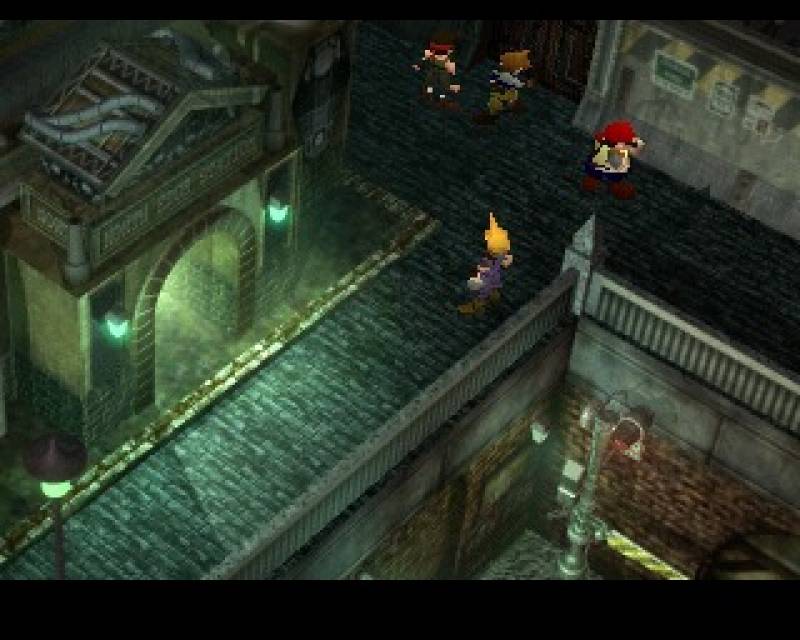
Bernie Stolar
In 1980, Bernie Stolar co-founded arcade game company Pacific Novelty, releasing Shark Attack the following year. Pacific Novelty put out a handful of other games, including NATO Defense, before being bought out by Atari, just prior to the video game crash of 1983. But Stolar's next business venture, creating conversion kits out of Japanese arcade games like Mr. Do! ultimately lead to a job as president and head of product development at Atari Corporation under CEO Jack Tramiel.
At the time, Atari had re-entered the dedicated home gaming market with the Lynx, a 16-bit full color portable console. This system became Stolar’s primary focus, and he considered the technology as the most advanced when compared to the Game Boy and Game Gear.
But by 1993, Stolar was frustrated with Atari’s knack for creating great hardware with poor software support. That year, he joined Sony Computer Entertainment of America where his role was to attract third-party developers to the forthcoming Playstation. His job included signing a six-month exclusivity deal with Williams for Mortal Kombat 3, which would become one of the hit Playstation releases of 1995.
In 1996 Stolar joined Sega of America as the executive vice president of product development.
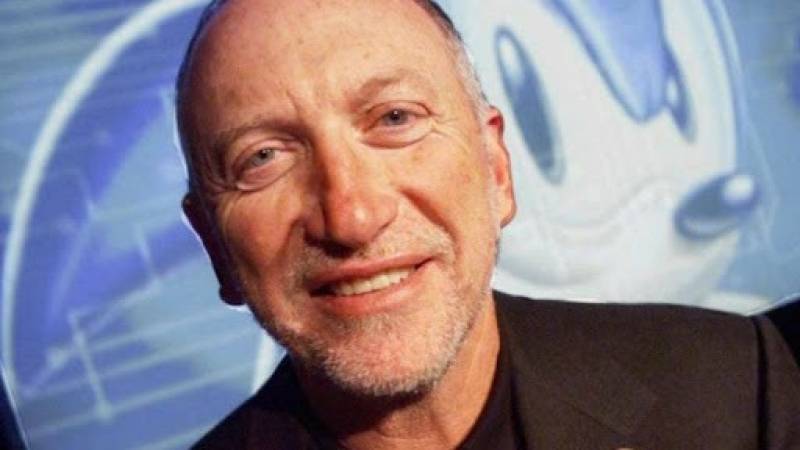
Brought on board to help to solve the underperformance of the Saturn, in an interview with Electronic Gaming Monthly Stolar famously stated that the Saturn was not Sega’s future. At sega, in an effort to minimize financial risk, Stolar introduced a “ Five star game ” rule, meaning that the only titles to be published on the Saturn should be amazing hits. As a result, there simply wasn’t enough quality software coming out for the Saturn in the US market.
By the end of 1997 , the sega Saturn had a small 2% of the North American home gaming market. Despite the Saturn was still selling well in Japan, overall Sega was in poor financial health, having lost by some estimates over a billion dollars over the course of the Saturn’s lifetime. Stolar, who by the spring of 1998 was serving as president of Sega of America, knew that if the company continued to haemorrhage money, they would lack the cash needed to stay in the hardware business.
In March of 1998 , the American division of Sega announced the last first-party games for the Sega Saturn; The House of the Dead, Burning Rangers, and Shining Force III, and after their release discontinued the system. For the first time in 12 years, Sega of America would no longer have an actively-supported home console.
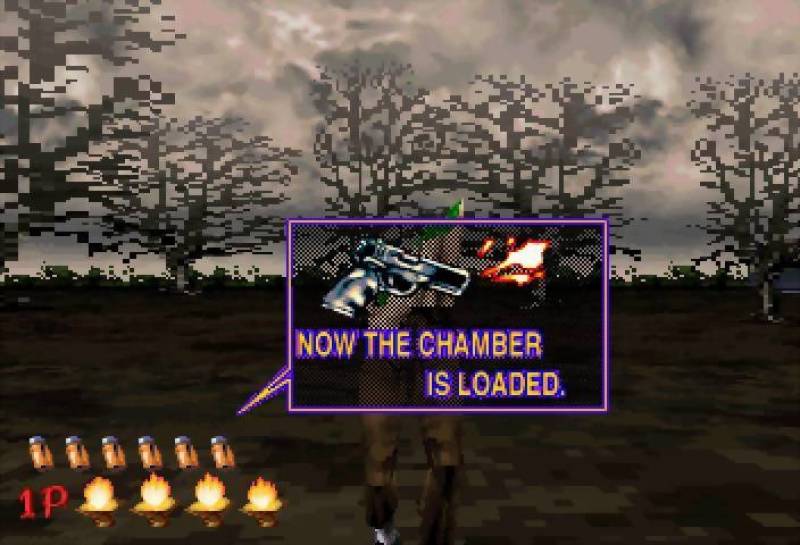
SEGA needed to come up with something very big soon, to regain relevance in the video game console market.
The successor of the Saturn
Development of a follow-up to the Saturn was being discussed as early as 1994 , but it wasn’t until 1996 , with the release of the Nintendo 64, that Sega decided to get serious about a next-generation console.
In the mid 1990’s, 3D graphics acceleration was the hot new thing in PC gaming, and the leading company in this field was 3Dfx, who made the popular Voodoo line of accelerator cards, popularised by PC games like Quake in 1996.
In February of 1997 , Sega partnered with 3Dfx to design a graphics chipset for their next-generation console. In fact, as a result of the collaboration between 3Dfx and Sega of America, the successor of the Saturn was being developed completely outside Sega of Japan.
Code-named “Black Belt”, the effort was led by former PowerPC design engineer Tatsuo Yamamoto. With input from developers who had released games on the Saturn, Yamamoto attempted to address the inputs by creating a console that facilitated ease of game design. Predictably, for Black Belt Yamamoto initially paired the Voodoo graphics chipset with a PowerPC 603e CPU. Seeing the operating system as another fault of the Saturn, the American design team looked to Microsoft to provide Black Belt with a developer-optional Windows-based operating system, again with an eye toward simplifying game development.
In the summer of 1997 , it was revealed that Sega of Japan had also been designing a successor to the Saturn.
Code-named “Dural” after the Virtua Fighter character, the project was led by Hideki Sato, the hardware engineer who had overseen the development of nearly every Sega console, including the Saturn. The Japanese design centered around the the Hitachi SH-4 CPU, the follow-up to the SH-2 used in both the 32X and Saturn. Sato’s team chose the PowerVR graphics chipset, at the time owned by Japanese electronics giant NEC, and despite the name was not as popular as the name VooDoo was, it potentially offered a superior value for its performance. Microsoft, it turned out, had been working with both design teams to provide a more developer-friendly OS.
Naturally, Sega of America favored Yamamoto’s design, while Sega of Japan backed Sato’s.
In the early fall 1997 , when the time came to decide between the two versions, for reasons that can only be speculated upon, Sega of Japan over-ruled its western division, choosing the Dural to replace the Saturn, causing an expected mass-exodus from the American design team and a costly lawsuit from 3Dfx.
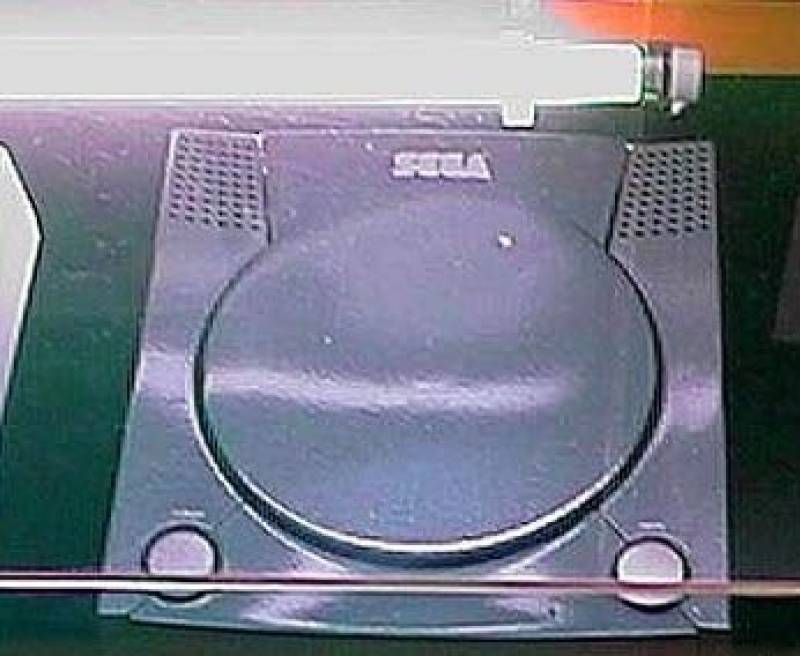
Dreamcast launch
In early 1998 , Sega announced that the new system, now code-named “Katana”, would ship out to Japanese stores in time for that year’s Christmas season. That May, at a press event called the “Sega New Challenge Conference”, Shoichiro Irimajiri, who had replaced ousted Hayao Nakayama as president of Sega, officially unveiled the Sega Dreamcast, outlining its final hardware specifications, and showing off a handful of tech demos. Six days later, at the 1998 Electronic Entertainment Expo , Bernie Stolar announced the Dreamcast to the western world, with an expected release in the autumn of 1999 .
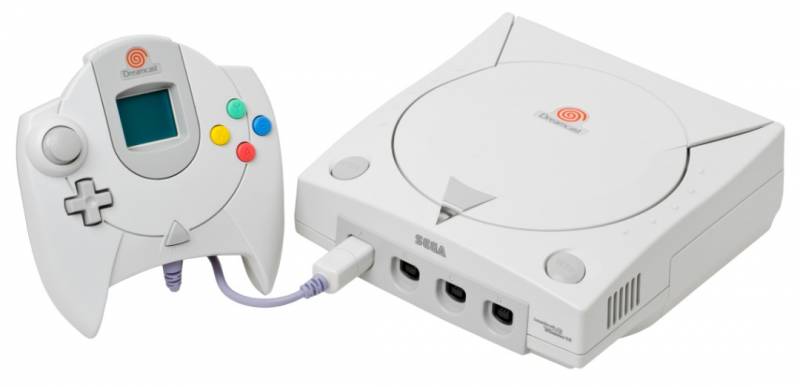
The Dreamcast’s hardware specs easily bested anything that the console gaming world had seen up to that point.
Under the hood, the system is powered by the aforementioned 32-bit 200 MHz Hitachi SH-4 RISC processor, an NEC PowerVR 2 graphics chip, and a Yamaha 64-channel Super Intelligent Sound Processor.
16MB of dedicated system RAM is joined by 8MB of video memory and another 2MB for the sound.
The Dreamcast can output video via composite, s-video, and RGB at both 240p and 480i resolutions, but compatible games can also be displayed in 480p using a VGA adapter.
The face panel of the system offers 4 controller ports, reflective of Sega’s desired emphasis on multiplayer play.
The controller itself features both an analog stick and traditional d-pad, 4 action buttons on the face, and two spring-loaded analog triggers.
The controller also has two expansion sockets at the top, into which one can plug Sega’s Jump Pack, adding force feedback. But more importantly, into these sockets plugs the Visual Memory Unit, or VMU, which serves as the console’s memory card but also features its own LCD screen along with both a d-pad and action buttons.
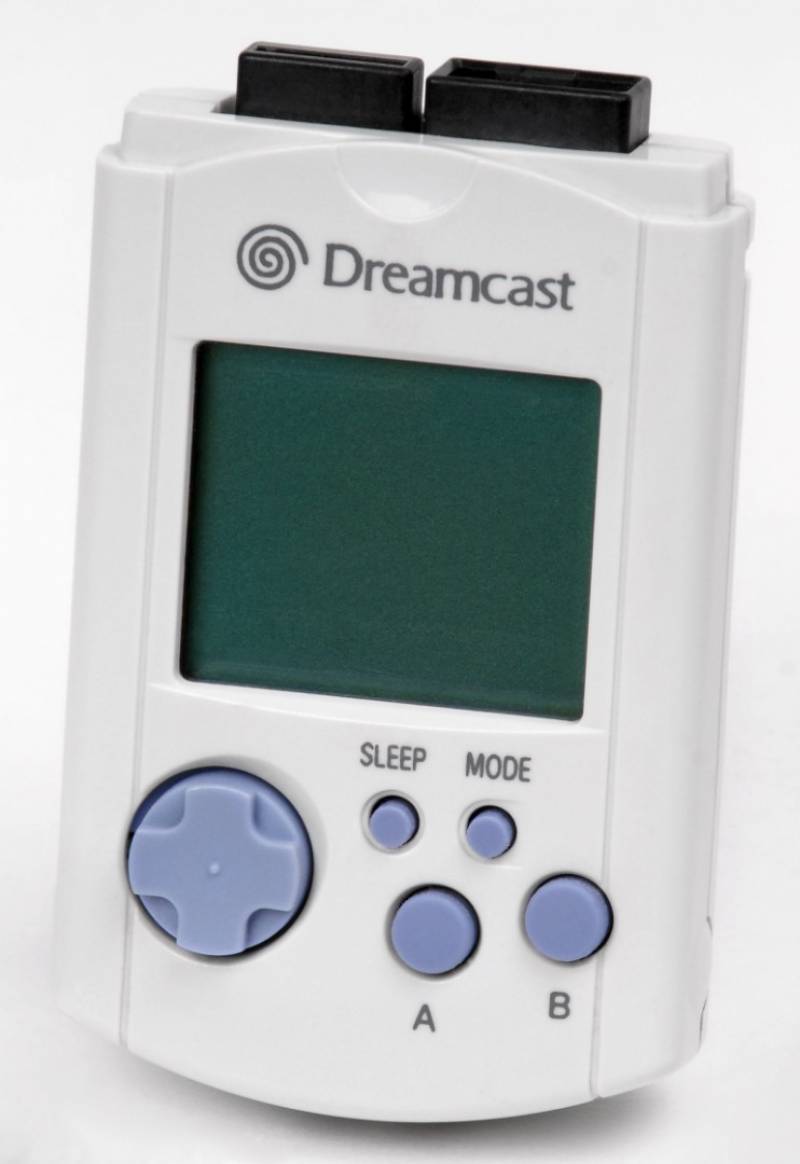
The VMU contains 100kB, or 200 “blocks” of accessible storage space, which is used for both game save data, as well as mini games that can be downloaded from certain Dreamcast titles. The VMU’s LCD screen is also viewable when the unit is plugged into the controller, a feature of which a number of Dreamcast games take advantage. Management of the VMU’s storage is performed using the console’s built-in menu system, which automatically loads when the system is powered on without a disc or with the drive door open.
Along with the power and multi-AV jacks, also found on the back of the console is a serial port, which is compatible with a seldom-used system link cable, but through a collaboration with SNK, the serial port is also compatible with the Neo-Geo Pocket cable, allowing data to be transferred between certain SNK-published Dreamcast titles and their analogous Neo-Geo Pocket releases.
The system also included a 33.6 modem, which allowed for online multiplayer play with compatible games, as well as web browsing with the Dream Passport disc that would be included with Japanese consoles.
DVD support had been rejected on budgetary grounds, but Sega also wanted to avoid using the CD-ROM format, which by the late 90’s was too prone to piracy.
As a collaboration with Yamaha, Sega developed the Gigabyte Disc, or GD-ROM. The format allows a compact disc to hold 1.2 gigabytes of data, and being proprietary, is neither readable nor theoretically writable by standard CD-ROM drives.
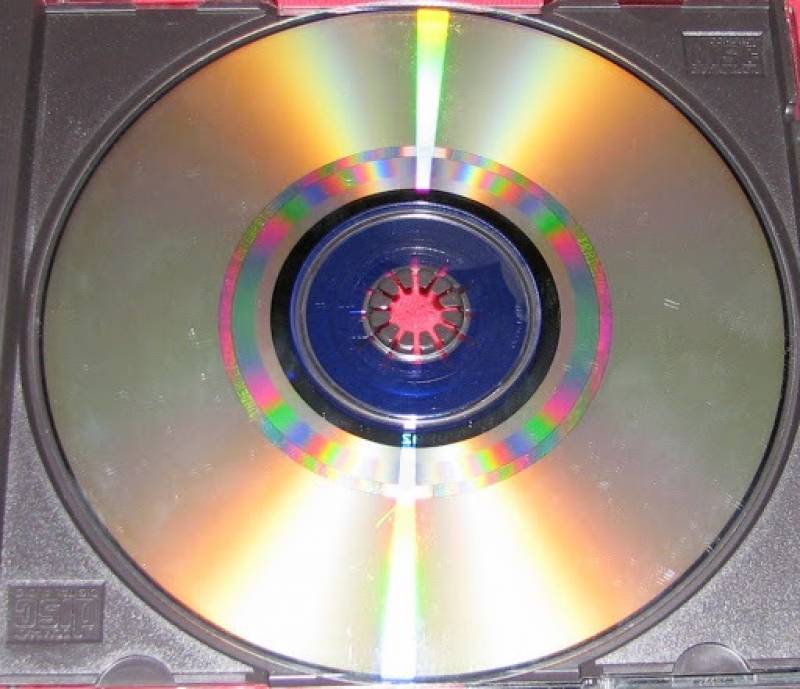
Developed in parallel with the Dreamcast was Sega’s newest arcade platform, the NAOMI. Similarly based around a Hitachi SH-4 CPU and PowerVR chipset, the NAOMI was essentially very similar to the Dreamcast, and a number of the NAOMI’s releases, including Crazy Taxi, Power Stone, and Ikaruga would subsequently be ported to the Dreamcast.
The Dreamcast hit Japanese stores on November 27, 1998 at a price of 29.000 yen, about 240 dollars, and the system’s launch lineup was comprised of just four titles: Godzilla Generations, July, and Pen Pen TriIcelon were all fairly forgettable. But the most popular game, by far, was Virtua Fighter 3tb, an updated version of the arcade-only Virtua Fighter 3, that was sold with nearly every Dreamcast console at launch.
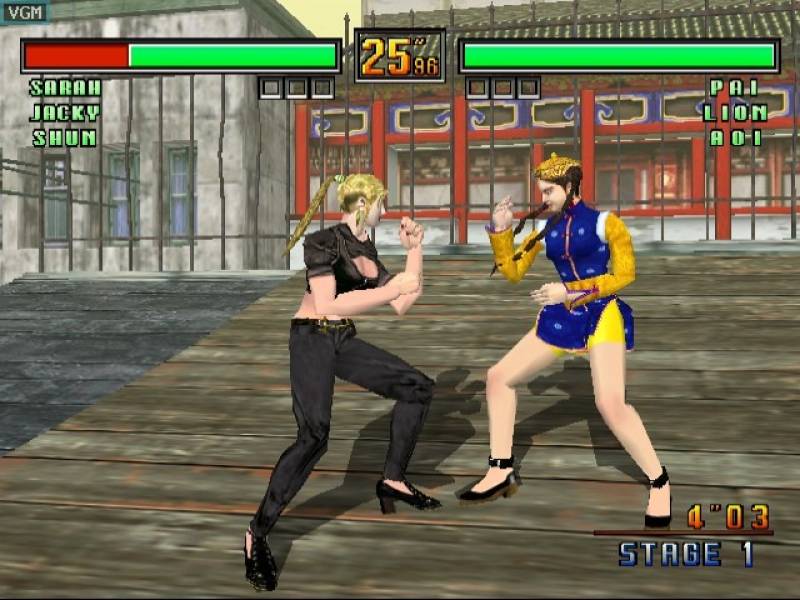
Sega sold 150.000 Dreamcast systems at launch, and 300.000 more in the weeks that followed, but with the rumored Playstation 2 looming on the horizon, Sega wanted to build an installed user base as quickly as possible. But a shortage of graphics chips from NEC prevented the manufacture of additional consoles, with Sega president Irimajiri estimating that 200.000-300.000 additional systems could have been sold in the weeks after launch.
With the Dreamcast’s North American launch still a half-year away, hype for the system was building with word of new games hitting the Japanese market, including Sonic Adventure and Sega Rally 2, along with an announced 199 dollars price tag.
Behind the scenes, Bernie Stolar was mending fences in the post-Saturn era, ensuring that the Dreamcast would be available wherever games were sold, and much as he had at Sony, also worked to bring back third-party developers.
But on March 2, 1999 Sony held a press conference to announce the Playstation 2.
With the specious promise of a 128-bit CPU, DVD storage media, backward compatibility, and graphical performance that, Sony claimed, would best even high-end Silicon Graphics workstations, even before launch, the Dreamcast would already be living under the shadow of the PlayStation’s then non-existent successor.
Sega of America began advertising the forthcoming Dreamcast in the early summer of 1999 , beginning with the “It’s Thinking” advertising campaign, a series of print and television ads that may have been a bit too nebulous in that it wasn’t always obvious just what it was that Sega was selling.
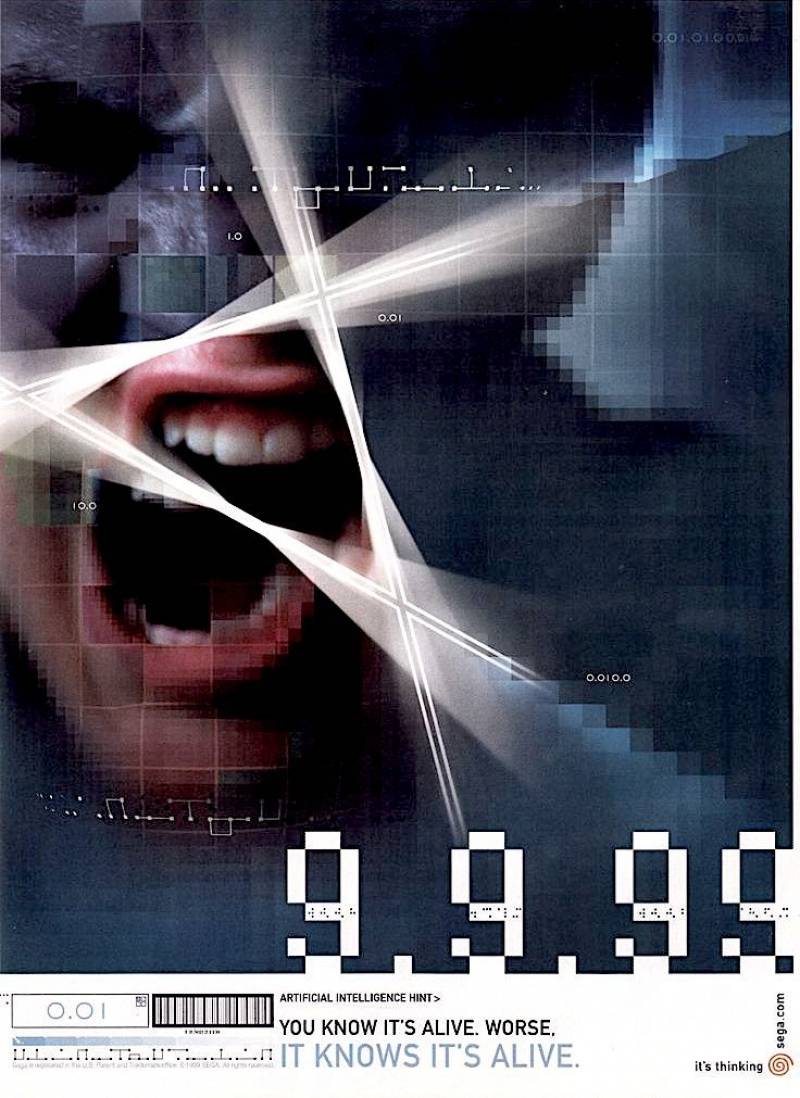
In July 1999 , still 2 months away from the US launch, gamers could rent the Dreamcast along with Sonic Adventure from one of over 1.000 Hollywood Video locations nationwide, and at the same time could pre-order the console from one of over 15.000 retail stores. For the North American market, the Dreamcast’s modem was upgraded to 56k, and just like the Japanese model, it was removable to allow the console to keep up with changes in modem technology. While Sega’s dedicated internet service, SegaNet, was still a year away, like the Japanese console, the North American Dreamcast came bundled with a Web Browser disc giving the console instant online functionality. None of the Dreamcast’s initial games featured online multiplayer play, but a few took rudimentary advantage of the systems tele-connectivity.
The following month , due to what Bernie Stolar called a disagreement between himself and Sega Chairman Isao Okawa, he was abruptly fired from Sega of America and replaced by underling Peter Moore, who would later oversee the Xbox and Xbox 360 at Microsoft, and serve as the head of EA Sports.
The Dreamcast was launched at the stroke of midnight on Thursday, September 9, 1999 , known affectionately as 9/9/99.
Between Thursday and Sunday , Sega sold 372.000 units, 300.000 of which were pre-orders, and after the nearly 1 million Dreamcast consoles that were part of the initial shipment had sold through, American retailers had trouble keeping hardware in-stock in the weeks that followed.
As was standard for the Playstation, also the Dreamcast came bundled with a demo disc. The first such disc was Dreamcast Generator vol. 1, which features playable demos of 6 of the system’s launch games, plus Sega Bass Fishing, as well as two non-interactive movies.
In a continuing effort to put pressure on Sega prior to the release of their own Playstation 2, ahead of the Dreamcast’s launch Sony dropped the price of the Playstation to 99 dollars, and scheduled the release of Final Fantasy VIII for September 9th . But on that day alone Sega sold over 225.000 consoles and brought in almost 100 million dollars, which at the time stood as a one-day world record.
Just like the chip shortage that hampered the console’s release in Japan, the Dreamcast’s debut in US was marred by a rash of defective discs affecting a large fraction of some game titles. Nevertheless, the North American launch was a huge success, and unlike Japan’s meager 4-game lineup, on September 9th, 19 games were on the store shelves, four of which were among the top 10 best-selling games in the month of September.










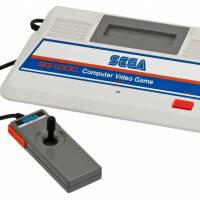





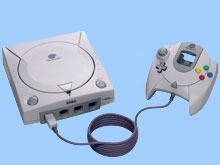
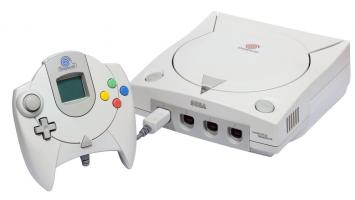
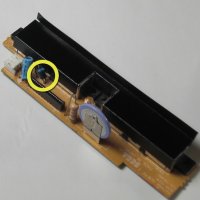
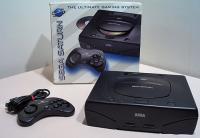




Comments